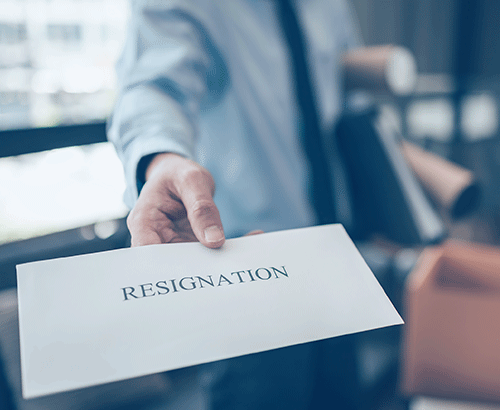Using an ESOP to Continue Your Company’s Legacy

With over 90% of E&C firms not being candidates for sale to a third party, employee stock ownership plans can serve as a viable succession planning tool for owners looking to transition out of their businesses.
By now we’ve all heard the staggering statistics about the number of baby boomer-owned businesses that will need to be transitioned over the next several years. According to Pew Research Center,1 roughly 10,000 baby boomers turned 65 in 2011, and by 2030 about 10,000 more will cross that threshold every day. Many refer to this as the “silver tsunami,” and it’s hitting the engineering and construction (E&C) industry where it hurts, and right when firms across all industries are grappling with the nation’s tightest labor markets ever.
“The cycle of ownership transitions happens every 25-30 years for all businesses. Every construction firm in America that’s not publicly traded goes through ownership transitions,” says Hugh Rice, FMI’s senior chairman of FMI Capital Advisors, Inc. “This transition process is currently being fueled by the high level of baby-boomer retirements. As a result, more people are trying to figure out how to exit their companies and leave those entities intact and on a growth path as company owners move into retirement.”
This isn’t any easy task for firms—particularly those 95% or so that aren’t candidates for sale to a third party. This can be difficult to accept, particularly for someone who has spent 30 to 40 years of his or her life creating and building the business. “Successfully transitioning the business from one generation to the next is a never-ending process,” Rice concludes.
Making the Tough Choices
According to nonprofit group Project Equity, baby boomers own about 2.34 million businesses that generate more than $5 billion in sales and employ 24.7 million people—about one-sixth of all U.S. workers. Project Equity also notes that most of these businesses do not have succession plans. For more than a decade, FMI has been surveying the E&C industry to gain deeper insights into current ownership transfer trends. In FMI’s latest “Ownership Transfer and Management Succession (OTMS) Survey,” one of the critical data points reveals that many next-generation leaders will not be ready to lead the business for another three to five years.
As a result, more business owners are trying to understand their transition options and decide on how to successfully exit their own companies and head off into retirement. For construction firms, this issue is even more complicated, as many companies are not candidates for sale to a third party. The main reason for this is that private equity plays a minor role in construction mergers and acquisitions compared to other industries—namely due to the bonding requirements, cyclicality of earnings and project-based nature of the industry “Private Equity’s Growing Role in Shaping the Built Environment.” Consequently, many construction company owners will have to use internal transition methods to exit their businesses.
FMI’s OTMS Survey also uncovered a rising interest in employee stock ownership plans (ESOPs) as an exit option for construction owners (Exhibit 1). An ESOP is a combination of a corporate finance transaction and a qualified retirement plan that has significant tax benefits for the seller, the company and the employees. ESOPs are operated through a trust and require that the benefits are broad-based and nondiscriminatory.
Exhibit 1. Changing company ownership dynamics in construction

Source: 2017 FMI OTMS Survey
As of 2018, the National Center for Employee Ownership (NCEO) estimates that there are almost 7,000 ESOPs, covering more than 14 million employees in the U.S. and holding about $1 trillion in assets. ESOPs are represented across a wide variety of industries, with construction companies representing approximately 11% of all ESOPs, NCEO reports, noting that companies with ESOPs and other broad-based employee ownership plans account for well over half of Fortune Magazine’s “100 Best Companies to Work for in America” list year after year.
Legacy, Recruiting and Retention
In 2013 only 4% of E&C firms that participated in FMI’s OTMS survey planned on using an ESOP as an exit option. In 2017 that number increased to 12%. This change in sentiment tells us that baby-boomer construction owners have not only come to grips with the fact that a third-party sale of their business may not be feasible, but also have embraced an ESOP as a tool for their legacy, recruiting and retention, and the long-term sustainability of their company. The significant tax-advantages are also too attractive to simply ignore.
To incentivize business owners to pursue an ESOP as an exit option, Congress has enacted legislation that provides significant tax incentives for the business owner, the company and the employees. For example, a 100% S-Corporation ESOP is exempt from all federal taxes (and state taxes in most states). And under section 1042 of the Internal Revenue Code, eligible shareholders are allowed to defer, or potentially eliminate, their capital gains taxation if the owner sells to an ESOP.
Research has also shown that employee ownership, combined with an ownership culture, can improve corporate performance compared to that of their peers. According to the NCEO, ESOPs have historically provided employees with greater retirement benefits and income generation while at the same time improving productivity, increasing sales growth and being more resilient during recessions. For example, employees at ESOP-owned companies have 2.5 times greater retirement accounts and have received 5-12% more in wages compared to their peers. Also, ESOP companies are 25% more likely to stay in business, and employee-owners were four times less likely to be laid off during the most recent recession.
Key Considerations
While there are many positive reasons why ESOPs are gaining in popularity with construction business owners, there are also key issues that are specific to ESOPs that must be thoroughly understood before pursuing this path. Some of the defining cultural characteristics of successful ESOPs are a pre-existing culture or willingness to pursue a culture of shared accountability, transparency, trust in senior leadership and a collective focus on results.
Employee stock ownership plans also require that senior leadership be keenly aware of the regulatory requirements specific to ESOPs as well as the cash flow implications of the repurchase obligation (i.e., the requirement of the company to buy back the shares of departing employees). It is also extremely important to be transparent with the surety during the process as well as understand the balance sheet implications of the transaction for both bonding and prequalification purposes.
As with any transfer alternative, ESOPs come with both advantages and disadvantages for construction firms. However, given the results of FMI’s most recent survey, many are finding the advantages of an ESOP an attractive alternative compared to a third-party sale and other internal transfer options. Of course, transitioning to an ESOP doesn’t happen overnight, nor does it automatically solve all of the issues associated with years of poor succession planning. Like any worthwhile business endeavor, creating and leveraging ESOPs requires good leadership, preparation, planning and patience. When done right, however, the benefits for the company’s owners, leaders and employees can be significant.
1 http://www.pewresearch.org/fact-tank/2010/12/29/baby-boomers-retire/



